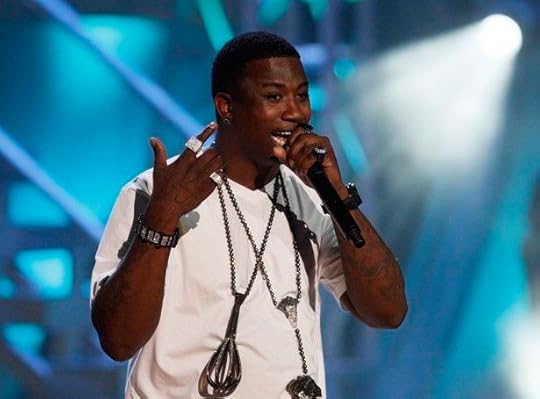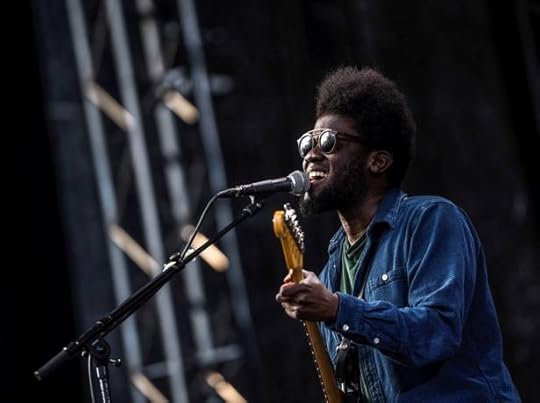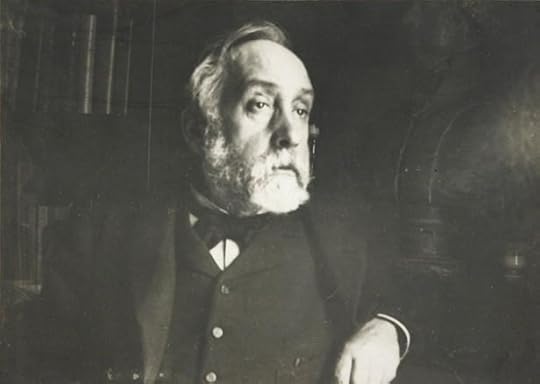Atlantic Monthly Contributors's Blog, page 105
August 7, 2016
The Singular Joys of Watching Ichiro

Sunday afternoon in Colorado, the Miami Marlins outfielder Ichiro Suzuki tallied a hit for the 3,000th time in his Major League career. Using his trademark batting style—less a swing than a kind of spinning stab, with the left-handed Ichiro already edging out of the batter’s box as bat meets ball—he whistled a pitch into right field, where it caromed off the wall as he ran lightly to third. Fans stood and cheered; Ichiro removed his helmet in acknowledgement; the Marlins left the dugout to congratulate him. He became the thirtieth player in Major League Baseball history to reach the figure, a hallowed number designating the true experts at the task Ted Williams called the toughest in all of sports: hitting around ball with a round bat.
The 3,000 hit club is home to all sorts of players. Derek Jeter and Alex Rodriguez both belong to it, each having joined with a Yankee Stadium home run. Ty Cobb, the vicious and racist star of baseball’s dead-ball era, is a member, as is Hank Aaron, as dignified a figure as the game has produced. The salty and officially shunned “Hit King” Pete Rose remains atop the leaderboard. When, a couple of months back, Ichiro matched Rose’s mark of 4,256 hits, including his hits in the Japanese professional baseball league, Rose responded with characteristic grouchiness: “It sounds like in Japan, they’re trying to make me the Hit Queen. I’m not trying to take anything away from Ichiro ... but the next thing you know, they’ll be counting his high-school hits.”
Ichiro is not nearly the best player in this group, but he may be the most representative of its spirit of sustained excellence, of moderate success massed into something spectacular over time. At his best, during a decade with the Seattle Mariners, he was a variously gifted talent, a wall-climbing and cannon-armed dynamo in right field, but his core genius was always for sending a baseball just out of reach of the defenders. Hitting, for him, has seemed like a labor of love—as if, were some dramatic rule change to render anything less than a home run useless, he would still go to the plate looking to flick pitches onto patches of open grass. The simplicity and clarity of his purpose has made him one of the most joyful players to watch in the game’s long history. Very few people get to be great at something as difficult as professional baseball. Fewer still get to be great in exactly the way they would like—Ichiro has.
Ichiro has used the same batting technique for his whole career, from his prime in Seattle to his post-prime stops in New York and Miami, but it looks, even on the thousandth viewing, like something he just recently decided to experiment with. Before every pitch, he holds his bat out and tugs up the sleeve on his right arm. Once he assumes his stance—knees pinched, shoulders rounded—his hands hold the bat up behind his ear, wavering in a way that might make anyone with a less impressive résumé seem nervous. At 42 years old, Ichiro still has the scrawniness of an underfed teenager. His left foot hovers before the pitch is released; one wonders, watching, how this mess of thin limbs at strange angles will arrange itself to hit a baseball.

The Miami Marlins right fielder Ichiro Suzuki (51) triples for his career 3,000 base hit in the seventh inning against the Colorado Rockies at Coors Field. Ron Chenoy / USA TODAY Sports / Reuters
Then the pitch crosses the plate, and it is as if some invisible hand has pulled a string on a gyroscope. Ichiro whirls at the ball. His shoulders fly outward and his feet go askew, but the bat comes through in a calibrated slice. His goal is not to “barrel up” the pitch so much as redirect it, to let its own energy, nudged outward, carry it into the field. All that bodily mayhem has a purpose, too; Ichiro starts running almost as he swings, so he gets to first base remarkably quickly.
It is one of the most singular motions in baseball, the work of someone who has dedicated untold hours to wringing every possible hit from the game. A quiet irony attends this work, though. Ichiro has played his career during a time when the base hit has lost its luster. He first landed in the Majors as a 27-year-old in 2001, in the middle of what would be recognized as the Steroid Era, when players across baseball were muscling up in an effort to land the ball not just between the defenders, but also over the outfield wall. He has kept on through the popularization of advanced statistics, which assert that batting average—the mark that testified, during Ichiro’s peak, to his annual greatness—is not as strong a measure of quality as previously thought. In this context, he is something of a man out of time, his presence next to the rest of baseball’s modern star class as incongruous as a horse and rider on the interstate.
This quality, though, has only added to Ichiro’s appeal. Professional sports have never seemed more like work than they do now. Players spend their lives hunting for an edge, be it technological, chemical, or statistical. They pore over frame-by-frame video and ingest supplements. They change their approaches according to dictates or trends and give post-game interviews that, understandably, have all the joy of an office-job performance review. In this context, someone like Ichiro—who does what he’s always tried to do, again and again, without much care for the sport’s shifting ideological winds—is a welcome throwback. When he plays it, baseball just looks a little bit more like a game.
Ichiro’s daily strategy has always been to set modest goals and to accomplish them with spectacular frequency.
Judging by his appearance, with his forearms not much bigger around than his wrists and his spidery legs, you might think that Ichiro didn’t have much choice in his style of play, that slapping the ball into the shallow outfield was all he could ever muster. Rumors around baseball have long contradicted this assumption, though. His batting-practice home run displays are the stuff of lore, and writers have speculated that, if Ichiro had opted to sacrifice some of his contact-hitting prowess, he could have been a credible slugger. Barry Bonds, MLB’s all-time home-run leader and the current Marlins hitting coach, is the latest to chime in on this front; before the All-Star game, Bonds said even the aged version of Ichiro could win the annual Home Run Derby if he chose, “easy, hands down.”
From one perspective, Ichiro’s allegiance to his approach might be seen as counterproductive, even vain. He may have been a more valuable player to his team with a lower batting average and higher home run totals, but he would never have led baseball in hits, as he has a whopping seven times over his career, nor would he have reached the magical 3,000 mark. An uncharitable reading of his career might present him as a stat-chaser more interested in gaudy sums than in playing his best baseball. In 2004, during Ichiro’s heyday, the rival player Gary Sheffield advanced this view: “Two hundred singles? Come on. That doesn’t make you a great hitter ... Any guy can go out there and get a single if that’s all you try for.”
Hordes of big-league washouts disprove Sheffield’s argument, but there is some truth amid the rancor. Ichiro’s daily strategy has always been to set modest goals and to accomplish them with spectacular frequency. As a young superstar in Seattle and an old contributor in Miami, though, he never gave off the sense of pursuing cheap notoriety, of trying to reach baseball fame via a side door. He seemed, rather, to be the rarest of athlete types: one who is able to exist in that mad world of pressures and demands and still hold onto the part of the game that first thrilled him.

A Nuclear Scientist's Execution

NEWS BRIEF Shahram Amiri, an Iranian nuclear scientist who received a hero’s welcome after returning from his alleged abduction by U.S. intelligence agencies in 2009, was hanged Sunday for treason, the Iranian government said.
"Through his connection with the United States, Amiri gave vital information about the country to the enemy," a spokesman for the Iranian judiciary told the BBC.
Amiri’s troubles began after he disappeared in 2009 during a pilgrimage to Saudi Arabia, during which he later claimed U.S. intelligence operatives had abducted him. CNN has more:
A year later, videos surfaced online showing a man claiming to be the scientist. In them he denied being a defector and claimed to have been hiding out from CIA operatives in the U.S. state of Virginia.
In a subsequent video, however, he said he was living freely in Arizona.
Two weeks later, on July 14, 2010, CNN reported that Amiri had returned to Tehran after going to Iran's interest section at the embassy of Pakistan in Washington. He repeated his claim that he was kidnapped by American intelligence operatives.
But questions remained about whether Amiri was abducted or had voluntarily defected. The AP reported his family may have been threatened by the Iranian government, thereby compelling him to return.

August 6, 2016
Can This Photo End Vigilante Killings in the Philippines?

The murder of Michael Siaron last month would ordinarily not have raised much comment. The sidecar driver’s body was found July 23 on the streets of Manila; next to it a cardboard sign with the words “I am a drug pusher, don’t emulate” written in all-black capital letters.
Raffy Lerma, a photographer with the Philippine Daily Inquirer, had already photographed one death that night during his 9 p.m. to-5 a.m. shift. When he received word of the second body, he raced to the scene. The image he shot there has captured the debate in the Philippines over the rise in extrajudicial killings following President Rodrigo Duterte’s election in May and the human cost of those killings.
***
As Rodrigo Duterte campaigned for president he advocated a simple approach to fighting criminals: “Kill them all,” he said to both gasps and loud applause.
Shooting deaths before Duterte won the May 9 election averaged about two a week in the Philippines. Immediately after his victory, one person was killed by police or vigilantes every day. Around the time Duterte took the presidential oath of office on June 30, it had risen to three a day. By July 21, not even a full month into Duterte’s term, it increased to 10 a day. In all, since Duterte assumed office, police or vigilantes have killed between 400 and 770 alleged criminals.
Duterte had previously served as mayor of Davao, a prosperous and quiet city on the southern island of Mindanao, for two decades. There he became best known for reducing crime. Bars stopped selling alcohol at 1 a.m. A strict curfew for teenagers was enforced. Duterte’s policies, though, weren’t without controversy. Human-rights groups said he encouraged vigilante squads to kill criminals. He gloated about personally shooting three men accused of kidnapping a girl. But that seemed to have little effect on his popularity. People liked what he did with the city so much, they believed he could make the same happen across the Philippines. When a New York Times reporter asked a woman in Davao if she feared he’d encourage rogue murders throughout the country if elected president, she said: “He’s only going to go after the killers and the drug dealers. Don’t be afraid.” Filipinos appreciated Duterte’s candor. He cussed during speeches. He joked about castrating overly amorous men in order to reduce the country’s birth rate. People saw him as someone who could clean up the Philippines from the state decades of elitist politicians had left it in.
Against his two elitist rivals in the election campaign, Duterte marketed himself as a man of the poor. The public loved it when he challenged one rival to a gun duel; the media dubbed him “Duterte Harry.” In May he beat his closest opponent by 15 percentage points. On June 30, Duterte took the oath of office in a room full of the country’s elites who applauded most fervently when he said, “My adherence to due process and the rule of law is uncompromising.”
WATCH: #PresidentDuterte's oath-taking https://t.co/pg3BzdoGxt https://t.co/7jgxTuayUf
— Rappler (@rapplerdotcom) June 30, 2016
Then, as a counterpoint, he said, “I know there are those who do not agree with my methods of fighting criminality. In response let me say this: I have seen how corruption bleed the government of funds. I have seen how illegal drugs destroy individuals and ruin families’ relationships.”
***
Those killed by the vigilantes are usually poor, some drug addicts, and some labeled drug dealers. The killers shoot from motorcycles, drop a cardboard sign with something like “addict” or “drug pusher” scribbled on it, then speed away. Killings like these went from being rare, to becoming daily occurrences, to reaching double digits every day.
The killings weren’t normal. All were tied to Duterte’s call for the extermination of the country’s undesirables—the addicts and criminals. He had promised to “fill Manila Bay with their bodies.” Within a week of Duterte officially taking office, the Inquirer was already writing about the killings in a fatigued tone: “The killings—and the explanations given by the police to justify them—continue to pile up.” Officers killed two suspected drug dealers while they were handcuffed. Vigilantes killed a man who had mocked the new national police chief. They shot up a cemetery and killed five people, including a mother and her son celebrating a birthday, leaving behind one sign for all of them. They killed a teenager feeding his dog, who seemingly had no ties to drugs; and police shot and killed a suspected drug dealer because he “tried to grab” an officer’s gun. Journalists like Lerma, the photographer with the Inquirer, chronicled many of these killings. But until July 23, when Siaron, the sidecar driver, was killed, the deaths attracted little attention.
Siaron, a 29-year-old drug addict, lived with his girlfriend, Jennilyn Olayres, in a shack in Manila with a leaky roof and no running water, beside a garbage-strewn river. When Lerma reached the scene a crowd stood around a circle of yellow police tape. Lights from the TV crews and their cameras shone on Olayres as she sobbed on the ground and held Siaron’s body to her chest.
This is the photo Filipinos have dubbed “La Pieta,” and the only part of it that needs explaining is that it captured something previously not captured by political rhetoric, other photos, or written words.
A photo posted by Raffy Lerma (@raffylerma) on Jul 31, 2016 at 8:20pm PDT
The Inquirer published the photo that next morning. It has since made its way around the world, and unleashed op-ed pieces and articles in Filipino papers about the killings, and about Siaron. “They sought to reduce him to a word hastily scribbled on a scrap of cardboard,” the Inquirer wrote. “But, in doing so, they also gave him a face. They made him visible.”
With the noise the photo raised around the killings, lawmakers joined in, and one senator, Panfilo Lacson, a former police chief, called for an inquiry into the vigilante murders, which he said sources in the department told him were three times as high as the government will acknowledge. Lacson even demanded an investigation into the officers who offer little reason for shooting people. On Tuesday, another senator, Leila de Lima, addressed Duterte directly: “Mr. President, truth now, in this country are lines of acrylic marker on a cardboard.”
Duterete has mocked the photo. Speaking to Olayres, he said: “You are portrayed in a broadsheet as Mother Mary cradling the dead cadaver of Jesus Christ.” He then blamed the media for hyping drama.
Duterte had promised to kill 100,000 criminals in his first six months in office. He is not on pace to do this. But since Lerma took his photo, the killings have increased from 10 each day to 13. This week, Olayres buried Siaron, a man few would care about if not for a photo.

Gucci Mane and Ballet: The Week in Pop-Culture Writing

Can Gucci Mane Survive His Legend?
Kelefa Sanneh | The New Yorker
“At the age of 36, he seems to be relishing his role as one of the most widely admired rappers on the planet, especially among his peers. Gucci Mane showed a generation how to emphasize intonation over enunciation, and how to deploy slight rhythmic imprecision to buck the stiff authority of the beat.”
Rediscovering Korean Identity
Nancy Jooyoun Kim | Asian American Writers’ Workshop
“But when I hear the Korean language, I want to jump in, dive into the sounds, because that is the music of those who have loved me. But I want it so badly that I am scared to fail. I’m frightened that what looks like water, might actually be a surface made of stone, and that I am not strong enough to survive the rejection of smashing into its surface. I am convinced that neither my family nor I can survive any more brokenness, homes or bones.”
Towards a Homogeneous Aesthetic
Kyle Chayka | The Verge
“Among the phenomenon’s consequences is depersonalization, in the psychiatric sense: ‘a state in which one loses all sense of identity.’ I personally like the AirSpace style. I can’t say no to a tasteful, clean, and modern life space. But thinking through its roots and negative implications makes me reconsider my attachment. It’s hard to identify with something so empty at its core.”
Swoopty-doopty, Let’s Head to Dunnville
Katie Baker | The Ringer
“Dunn’s presence has always been one of her great gifts. She is just so very there: on the ball, in your face, past your reach. When she plays, she is noteworthy for the same reasons a hummingbird or a shooting star catches the eye: their ceaseless movement, their transient thrill.”
Jill Solloway’s New Family
Jason McBride | Vulture
“Just a glance around the set, a fictional, dimly lit restaurant suggestively called the Rope and the Loin, which the art department built in a disused wing of Marfa’s renowned Hotel Paisano, gives a hint of the show’s mash-up of place and perspective: The diverse, largely female crew is mostly from Los Angeles and Austin, the extras a ragtag assortment of Marfans, many older and wearing their best cowboy hats. And then there’s Griffin Dunne, shuffling around in a gray linen suit, pink shirt, and Ugg scuffs, his silver hair almost shoulder length—Bernard-Henri Lévy’s American cousin.”
A Ballet Teacher Changes the Rules
Gia Kourlas | The New York Times
“In Ms. Tuttle’s increasingly popular ballet classes, actual dancing is encouraged — something that’s less common than you might expect. Ballet class is usually a place to hone an impossible technique, and dancing is for the stage. But Ms. Tuttle doesn’t subscribe to that notion; what’s startling about her classes is the freedom she pulls out of her students. She cares deeply about technique, but for her, ballet is about more than positions; by the end, even beginners find themselves linking academic steps into swirling dancing phrases.”
Russell Westbrook Still Doesn’t Care What You Think
Nathaniel Friedman | Victory Journal
“Almost despite himself, Russell Westbrook now makes sense. Kevin Durant was the Thunder’s franchise player and Russ was abrasive anti-matter. When Durant skipped town, the polarities reversed. The sports morality police may not have come out in full force for KD—maybe as a civilization we’ve evolved beyond such petty thinking—but he’s no longer a sympathetic figure. Westbrook, on the other hand, finds himself in the unlikely position of upstanding citizen. In one day, Westbrook has gone from an outsider sowing chaos to a key component of the NBA’s ecosystem.”
HBO’s New Comedy Questions Our (Vice) Principals
Lili Loofbourow | The Week
“Asshole TV also understands that the order in which you experience events onscreen shapes your sympathies. First impressions matter, and Vice Principals goes to a lot of trouble to contextualize the events I described above — which amount to racial terrorism — so that they're allowed to be funny.”
Where Have All the Women in Country Music Gone?
Mark Guarino | The Guardian
“Fewer women on the country scene also means men dominate the conversation, which is why so much of country radio is ridden with songs about driving trucks or relationships from the male perspective.”

Frank Ocean, Harper Lee, and the Reclusive Artist

I was 16 when I first became intrigued with Harper Lee. As an aspiring fiction writer, I was fascinated with the details of novelists’ lives—how they manage to surmount the seemingly insurmountable task of creating and rendering an entire imaginary world. Lee’s biography lured me in before her writing even did: her father the attorney, the trial of the Scottsboro boys and the influence it had on her, her friendship with Truman Capote. In my teenage exploration, one word emerged over and over: recluse.
Lee refused interviews for decades. As To Kill A Mockingbird emerged as one of the most beloved works of fiction in the American canon, she led a quiet life in small-town Alabama, while the second novel she’d hinted at failed to appear. These twin facts—the solitary magnum opus and the life spent hiding from its bloom—coalesced into a kind of mystique, both in my own mind and, it seemed, in the minds of those who studied her from afar. The Telegraph referred to Lee as having “succeeded in protecting herself … and living a life which is of her choosing.” PBS called her an “enigma.”
A decade later, when I was an English teacher leading my eighth-grade class in study of the novel, I found myself thinking often of Lee on my drive home. How could someone with such an astute understanding of the world apparently want so little to do with it? How could someone craft so perfect a piece of art, only to shy away from the acclaim it produced?
That summer, I received a 3 a.m. email from a student of mine who’d gone on to high school, checking in with me about her freshman year. She told me to listen to a mixtape by a new singer she liked. I looked him up. It’s no hyperbole to say I’d never before heard anyone who sounded like Frank Ocean. I’d never heard soul- or R&B-inspired vocals paired with lyrics that moved so recklessly beyond the purview of how I understood those genres—words that emerged from the familiar only to blossom into pathos, surrealism, and irreverence.
Channel Orange, like Mockingbird, is an unapologetic masterpiece for people defining themselves at the intersection of lived experience and possibility.
A week later, a demo version of the song “Thinkin Bout You” began circulating online, leaked via the Tumblr account Ocean (or Frank, as many of us call him, Frank Ocean having earned his way into the esteemed pantheon of black people whom other black people call by first name as though we enjoy a personal relationship) maintains. The song blends a sedated, downtempo beat with Ocean’s plaintive vocals—moving at times into a strained falsetto that my grandparents’ generation would probably find pitiful, and that my generation seems to perceive as endearing and honest in its limitations. “Thinkin Bout You” would become the opening song when Ocean’s first album, Channel Orange, was released in 2012. With it, I was hooked. So, it seemed, was everyone I knew.
Listening to Channel Orange is sort of like having a sleepover at your best friend’s house and hearing them sing in the shower in the morning. It’s like driving home late at night from a party where you were kissed by someone you pined after and never knew liked you back, and yell-singing along when the song of the summer comes on the radio. It’s at once nostalgic and [afro]futuristic, mundane and bizarre.
The album immediately seared itself into the hearts of a black millennial vox populi, becoming an unapologetic masterwork for a group of people increasingly defining themselves at the intersection of lived experience and possibility. And in this way, the work is oddly reminiscent of Mockingbird. Lee returns readers to the sleepy Southern hometown in which most of us never actually lived—a place where even the terrorism of a lynch mob and the specter of unjust death are hushed by the charm of childhood adventure and a young girl’s steadfast belief in her father’s integrity. As Mockingbird revisits the racist hierarchies of 1930s Alabama through a hazy lens of make-believe games and pecan trees, Channel Orange spins tales of drug addiction, sex work, and class divides between the ache of lost love and the click-whir of a tape rewinding.
Then summer ended, as it is wont to do. And it was cold, and then warm again, and suddenly Channel Orange was a year old, and then more time passed and it was two years old, and at some point the thing that was new and beautiful was no longer new or beautiful enough and people started asking for something else. Somewhere lies an invisible and intangible rubric, by which some works of art are deemed classics—a status that effectively protects the artist from facing slander or even ever having to produce something good ever again. To Kill A Mockingbird is in that category. So is The Miseducation of Lauryn Hill. Illmatic. The Sixth Sense. But Channel Orange, evidently, is not. Rather than being viewed as a sufficient, self-contained masterwork, Ocean’s audiences have taken it as the promise of more. More memories, more beauty, more nostalgia. And Ocean, for his part, has encouraged it—whether or not it’s a promise he can keep.
* * *
On April 6, 2015, Ocean posted an image on Tumblr of himself seated in front of two stacks of magazines; one cover is labeled Boys Don’t Cry. The caption, now infamous, reads “I got two versions. I got twooo versions…” and the post is hashtagged “#ISSUE 1 #ALBUM 3 #JULY2015 #BOYSDONTCRYMAGAZINE.”
Thus began the spiraling period I can only imagine Ocean historians will one day refer to obliquely as The Wait, or perhaps The Age of Acrimony. After July came and went with no album to speak of, Ocean’s every action—or, more often, inaction—was met with indignation from those who’d previously declared their adoration for him. “Frank Ocean is a liar” became as reliable a sentiment on social media as tweets about television or the weather. There are variations, depending on the day: a “certified platinum liar,” a “disgusting liar,” a “liar and a fraud,” a “compulsive liar.” Ocean granted no interviews and offered no commentary on the rumors that would crop up via other artists, assuring journalists that the album would manifest itself eventually. “I feel like he’s working harder than he’s ever worked in his life,” the producer Malay told Pitchfork. “I know he’s away making a masterpiece,” Chance the Rapper told Complex. And when Ocean did emerge from obscurity in brief fits—sitting in the audience at Kanye West’s Madison Square Garden release party for his album The Life of Pablo, appearing in a Calvin Klein commercial—fans responded to his presence with angst and rage.
That angst was amplified this past week when Ocean launched a livestream from his website … of himself, viewed from a distance, engaged for several hours in what appeared to be a woodworking project in a large, empty room. The startling visual of a vast, empty space—in contrast to the cacophony represented by, say, a livestream from Madison Square Garden—puts me in mind of something Lee once said in an open letter to Oprah Winfrey.
Rather than keeping us almost entirely out of the empty room, as Lee did, Ocean chose to let us in through hints and ephemera.
“75 years later in an abundant society where people have laptops, cell phones, iPods, and minds like empty rooms, I still plod along with books ... Now we are three in number and live hundreds of miles away from each other. We still keep in touch by telephone conversations of recurrent theme: ‘What is your name again?’ followed by ‘What are you reading?’ We don’t always remember.”
What happens to an artist when other people are allowed to see inside that empty room, to watch the quiet and slow and plodding work of construction that is happening therein? For Lee, who gave only a single recorded interview about the novel—in 1964—it seems that it was safer to adhere to the words of the poet Gwendolyn Brooks: “Art urges voyages. And it is easier to stay at home.” In continuing to quietly, privately live her life with the fog of fame safely on the other side of her door, Lee made a choice about self-determination at the cost of public presence. Of course, it helps that those who have adored her over the decades have been mostly content to let that choice ride itself out without condemnation.
This week, Ocean was supposed to release his album. As of this writing I have no way of knowing if it will really happen or not. What I do know is that Harper Lee eventually published a second novel, but not until she was at the eve of her death and beset with a dementia that some say enabled her attorney to take advantage of her and publish Go Set a Watchman against her wishes. The existence of the novel was the stuff of rumors for decades. And yet, no one called Lee a liar; no one said they could never love or trust again because her career was built on broken promises. No one ever seemed to tire of To Kill a Mockingbird even as the trope of the white savior moved into the realm of the socially distasteful in a way that might turn contemporary readers against the beloved Atticus Finch. It was a classic. And that was quite simply enough, even without a subsequent masterwork or public performance from the author. It was enough.
There’s a deep intimacy that seems to underlie the fury directed toward Ocean. Sharing the news of the alleged new album on Facebook this week, my friends’ reactions were so personal that it would have been impossible for the uninitiated to guess that they were talking about someone other than a dear friend. “Francis, I swear to gawd if you’re playing with my emotions...” “I heard you bout to lie again on Friday. Say it to my face this time.” “Good thing I have therapy on Monday, just in case.” I find these sentiments a little odd, even within myself, but still unsurprising. It’s the frustration we reserve for those we love, those who disappoint us time and time again but draw us into their orbit—through bonds of love, trauma, family—such that we know we will stick around to be hurt again and again, and will never stop believing in them nevertheless. Why are you doing this to us?
But what about that invisible rubric? That is, why can’t Channel Orange be enough in the way that Mockingbird is? Is it because rather than keeping us almost entirely out of the empty room, as Lee did, Ocean chose to let us in through hints and ephemera? And more broadly, what are we owed by an artist whom we profess to love? Why does the quiet deliberation of one soft-spoken Southern Gothic artist with a widely adored debut inspire awed respect and deference, while another inspires bitter disappointment? How do we maintain an earnest interest in and desire for art we love, while respecting the autonomy of the person who creates it and the fact that creating anything at all is the most excruciating of human endeavors?
I haven’t read Go Set a Watchman. Maybe it will take me all the years that To Kill a Mockingbird did, or maybe I will die without having read it the way Harper Lee almost died without ever seeing it enter the world. It seemed, for years and years and years, that she was just fine with that possibility, and thus so am I. And I think that if I had to, I could accept that living in a world that includes Channel Orange is enough, just enough. I wonder whether maybe, if Frank Ocean decided that he never again wanted to allow us entry into his inner life of errant indoor tornadoes, high school football player crushes, and ancient palaces, we could forgive him. Whether maybe we could even love him again.

August 5, 2016
This Year’s Mercury Prize Nominees May Be What Britain Needs

When Talvin Singh won the Mercury Prize in 1999 for his debut album OK, few had heard the work of the then 28-year-old percussionist from East London. Though he has since become a prolific figure in the world of indie music, Singh was an outsider for the coveted award at the time and seemed equally surprised at beating out his more popular competitors: the ’90s icons Blur and The Chemical Brothers. He became only the second solo artist of color to win the annual prize, which was created in 1992 as an alternative to its more glamorous and noisy cousin, The Brit Awards. After his win, Singh, the son of Indian-born Ugandans, told the BBC, “This is incredible as far as the music industry is concerned ... I am not a minority anymore, I am a majority. This [award] is celebrating that.”
The Mercury Prize has since continued its tradition of recognizing British artists across a diverse spectrum of sounds and identities. The Prize has actively sought to distinguish itself from the swampy, drawn-out process of similar music awards by making the issue of genre irrelevant and by valuing innovation over chart performance. This year, it has also taken a more democratic approach to the judging process by allowing British citizens to weigh in on the six finalists.
This year’s Mercury Prize nominees—announced Thursday—included some old stalwarts: Radiohead, who have been nominated a record five times but never won, and David Bowie, posthumously included for Black Star. But among the 12 nominees are also at least six artists who are either first-generation British citizens, born to immigrant parents, or moved to the U.K. at a young age. Their nomination comes at a time when the U.K. is still grappling with the implications of an early post-Brexit world, struggling with both internal xenophobia and the widespread fear around the European refugee crisis. The vote to leave the European Union hinged in part on nationalistic concerns about preserving Britain’s identity and what it means to be British today.
But the 2016 Mercury Prize shortlist is a testament to the fact that some of the country’s most promising musicians are the product of the very things pro-Brexiters rejected: immigration and a more open Europe. These artists ask through their music—though not always directly—what it means to possess an identity that is distinctly British while embracing other cultural heritages, and whether both things are mutually exclusive (they aren’t).
The rapper Skepta, probably the most globally recognized name of that group—due in part to his collaborations with Drake and America’s newfound love for grime music—received a nod for his fourth studio album, Konnichiwa. Born Joseph Junior Adenuga to Nigerian immigrants, Skepta grew up in North London but continues to keep his native country close to his heart, building playgrounds in Ijebu Ode and protesting against Boko Haram outside the High Commission in London.
Kano, another key figure of the early grime scene is also in the running for this year’s prize for his fifth album Made in Manor. Born into a family of Jamaican immigrants in East London, Kano was raised on a steady diet of soundsystem culture and reggae, and his influences show through his music, which is often driven by a pounding dancehall beat.
The Birmingham-born R&B singer Laura Mvula, a previous Mercury Prize nominee, makes the shortlist for her soulful, jazzy second album The Dreaming Room. Born to a Jamaican father and a mother from the island of St Kitts, Mvula cites diverse musical interests from Diana Ross to reggae church music and contemporary gospel.
Also in the realm of gospel-inflected soul and blues is Michael Kiwanuka, who was nominated for his second effort Love and Hate. Like Singh, Kiwanuka is the the son of Ugandan immigrants who fled the Idi Amin rule to North London. Kiwanuka has carved a singular space for his delicate melodies that, according to his producer, use the “looseness and groove” of Ugandan folk music. Now more so than ever, Kiwanuka seems to be deeply interested in the intersections of identity on his newest album. In the bluesy, percussive track “A Black Man in a White World” —which Adele raved about on Twitter about—he croons: “I’m a black man in a white world… I’ve been told my lies / I’ve got nothing left to pray / I’ve got nothing left to say.”
Joining the host of jazz-imbued artists making this year’s shortlist is Jamie Woon, the enigmatic singer with a languid voice and tremendous control of his upper register that seems to channel Marvin Gaye. Woon—who studied at the BRIT School of Performing Arts a year behind Amy Winehouse—is the son of a Chinese-Malaysian immigrant. In 2012, Woon traveled to China on a residency where he intended to explore the connections between his own work and the traditional music of Xi’an.
There’s also Bat For Lashes, the stage name of Natasha Khan, the half-Pakistani, half-English artist nominated for her fourth album The Bride. In an interview with Pitchfork, Khan talks about marriage as an inspiration for the album and about how her father tried to arrange one for her when she was 18.
Lastly there’s Shabaka Hutchings, a saxaphone player for the nu-jazz outfit The Comet is Coming, nominated for their first full-length Channel the Spirits. Hutchings was born in London but moved to Barbados at a young age, and he actively infuses the complex rhythmic elements of Barabian, Carribean, and West-African music into his own projects, which include working with jazz music’s own spaceman, Sun Ra.
Other countries are following the Mercury Prize’s example and recognizing a wider variety of music. Canada, a country with one of the highest immigration rates in the world, created the Polaris Prize in 2006, modeling it along similar lines and values as the Mercury. Only last year, the U.S. introduced the inaugural American Music Prize, awarded to the saxophonist and Kendrick Lamar-collaborator Kamasi Washington, claiming inspiration from the Mercury Prize’s success and forward-thinking approach. In a tumultuous and divisive political year, this year’s Mercury nominees embody Talvin Singh’s belief that, “Music shouldn't have boundaries ... It’s just language that everyone can identify with.”

Degas' Hidden 'Portrait of a Woman'

NEWS BRIEF Scientists uncovered a hidden figure within French Impressionist painter Edgar Degas’ 140-year-old painting “Portrait of a Woman,” solving a mystery that has puzzled art critics for decades.
The mystery figure was first revealed in a Scientific Reports study Thursday, which detailed the process through which Australian scientists, in coordination with the National Gallery of Victoria in Melbourne, used a high definition x-ray beam to scan the portrait and reveal Degas’ original composition. The non-invasive technique, which uses a particle accelerator known as a synchrotron, allows scientists to study the evolution of a portrait’s making.
Though art critics have been aware of the existence of a mystery figure in the Degas portrait—whose outline became increasingly apparent as the portrait aged—since the 1920s, the concealed figure was never identifiable. After unearthing the original image, researchers now believe the hidden face to be Emma Dobigny, one of the artist’s favorite models.
The scientists said they were surprised by the quality and detail of the images revealed through the x-ray technique, which has the potential to reveal other artistic mysteries. As the report states:
This study has successfully demonstrated a virtual reconstruction of a hidden portrait by Edgar Degas and has delivered a better understanding of his work and artistic practices. The authors propose that the unfolding technological developments for examining artwork using synchrotron radiation-based techniques will significantly impact the ways cultural heritage is studied for authentication, preservation and scholarly purposes.
It was not uncommon for artists in Degas’ time to paint over previous pieces, and synchrotron techniques have enabled scientists to reconstruct these concealed works of art. In 2008, scientists used the technique to uncover the image of a peasant woman in Vincent van Gogh’s 1887 “Patch of Grass.”

The Footage of a Police Killing in Chicago

NEWS BRIEF Chicago police released several videos Friday, including footage from dash and body cameras, that show officers shooting and killing an unarmed black man driving away from police.
Hours before media published the video, Sharon Fairley, the head of Chicago’s police oversight agency, called it “shocking and disturbing.” The nine videos show a car chase through South Side Chicago that ended in the death of 18-year-old Paul O’Neal. The fatal shot, however, is not shown, because though the officer who killed O’Neal wore a body camera, it was not, as we previously reported, turned on during the shooting.
Police had tried to stop O’Neal, who was believed to be driving a stolen Jaguar convertible, around 7:30 p.m on July 28. He was chased until he smashed into a police car. At that point, the video shows two officers, guns drawn, jump out of their cars and shoot at O’Neal in a crossfire, something that appears to violate department policy, which prohibits shooting at a vehicle when it’s the only danger.
In the videos, O’Neal’s car crashes to a stop. He then runs into a home’s backyard. Officers follow, climbing a gate. There is no footage of the fatal shot. When the other officers arrive, O’Neal lies on the ground, in handcuffs, bleeding from his back as officers check to see if any of them were injured. O’Neal later died.
Police Superintendent Eddie Johnson stripped three of the officers involved of their police authority, and said it appeared they had violated policy. This is a major turnaround from a department and city that fought for a year the release of a video showing police kill Laquan McDonald, 17, whom officers shot 16 times.
As the Chicago Tribune reported, this change is in large part because of a federal investigation into the department, and also polices enacted by Mayor Rahm Emanuel:
The McDonald video — and long-simmering dissatisfaction with police use of force among many African-Americans — led to sustained protests, and the U.S. Justice Department launched an investigation to determine whether police had systematically violated residents' rights. Federally enforced changes could come from that ongoing investigation, and Emanuel has announced or enacted a raft of reforms to policing and officer oversight.
The officer who killed McDonald, Jason Van Dyke, was charged with murder.
In O’Neal’s death, the city’s Independent Police Review Authority (IPRA) will investigate the shooting and recommend an action. As the Tribune pointed out, the IPRA hardly ever recommended stern charges for officers involved in questionable shootings. But since Fairley took over last year, the agency has ruled more shootings unjustified than in all its previous nine years combined.

The Rising Death Toll in Indian Kashmir

NEWS BRIEF Three people were killed and more than 100 injured Friday after security forces opened fire on protesters in Indian Kashmir, bringing the death toll since clashes began in July to 55, Reuters reports.
Two protesters were killed in western Srinagar, the capital of India’s Jammu and Kashmir States, and one was killed in the north. The protests, which took place amid region-wide curfews, began after Friday prayers.
Violence first erupted last month following the death of Burhan Muzaffar Wani, a 22-year-old separatist militant credited with reviving militancy in Kashmir, India’s only Muslim-majority state. He used his active following on social media to encourage youth to join the Hizbul Muhahideen.
Several deaths and injuries to protesters have been attributed to pellet gun wounds, which sparked criticisms of excessive force by security officials. Amnesty India tweeted Thursday condemning the use of pellet guns, citing hundreds of injuries.
Pellet guns are inherently inaccurate and indiscriminate, and have no place in law enforcement. #Kashmir
— Amnesty India (@AIIndia) August 4, 2016
Kashmir has been claimed in its entirety by both India and Pakistan since both countries achieved independence from Britain in 1947. Three wars have been fought over the disputed territory. India controls about two-thirds of the region and Pakistan about a third; China controls a tiny part.

The Lingering Mystery of Malaysia Airlines Flight 370

NEWS BRIEF The pilot of Malaysia Airlines Flight 370 plotted on his personal home simulator a course into the Indian Ocean, a Malaysian official acknowledged for the first time. Transport Minister Liow Tiong Lai’s remarks Thursday raise more questions about why the plane mysteriously disappeared in 2014.
New York magazine reported last month that a U.S. law-enforcement analysis of pilot Zaharie Ahmad Shah’s home computer showed he mapped a path into the Indian Ocean less than a month before the plane disappeared. This news raised suspicion among victims’ families who believe the Malaysian government has tried to cover up information about the lost flight.
But Lai, the transport minister, said the revelations may not mean much, as the Associated Press reported.
“Until today, this theory is still under investigation. There is no evidence to prove that Captain Zaharie flew the plane into the southern Indian Ocean.” Liow said. “Yes, there is the simulator but the (route) was one of thousands to many parts of the world. We cannot just base on that to confirm (he did it).”
The plane and its 239 passengers and crew vanished in 2014 while en route from Kuala Lumpur to Beijing. Investigators don’t know why it veered off course. Several countries, with Australia leading the investigation, scoured the ocean for remains of the Boeing 777. The search was suspended in July.

Atlantic Monthly Contributors's Blog
- Atlantic Monthly Contributors's profile
- 1 follower



